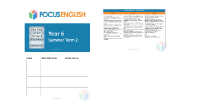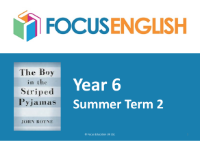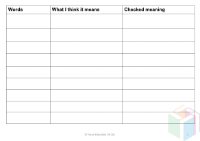The Boy in the Striped Pyjamas - Learning Sequence

English Resource Description
The learning sequence for 'The Boy in the Striped Pyjamas' spans over six weeks, providing a comprehensive unit overview for educators. Initially, students are encouraged to complete a chapter summary and share their first impressions of the narrative, supporting their views with quotations from the text. As they delve into the first two chapters, they are tasked with answering key questions using evidence from the book, applying the Point, Evidence, Explanation (PEE) model to articulate their responses. The name 'Out-With' and its suggestive description are also explored, prompting students to consider the implications and underlying messages conveyed by the author, John Boyne. In the subsequent chapters, students focus on specific extracts, analyzing the portrayal of danger within the camp and the character development of Bruno's father, as well as the dynamics between various characters such as Pavel, Lieutenant Kotler, and Bruno's sister Gretel.
As the unit progresses, students delve deeper into character analysis, completing tasks such as role-on-the-wall exercises and writing letters from Bruno's perspective to his grandmother, which later require editing and redrafting. They also examine Bruno's innocence and naivety, analyze the theme of fear through character interactions, and compare and contrast the lives of Bruno and Shmuel. In the final weeks, the focus shifts to the mother's character and her reactions to life at 'Out-With', with students asked to interpret key quotes and chart the emotional journey of the characters. The unit culminates with students reflecting on the novel's ending and discussing its overarching themes. They also engage with poetry, annotating and discussing 'The Door' in relation to their own transitions, such as moving to high school, ultimately creating their own poems to express their feelings about the next stage in their lives.



